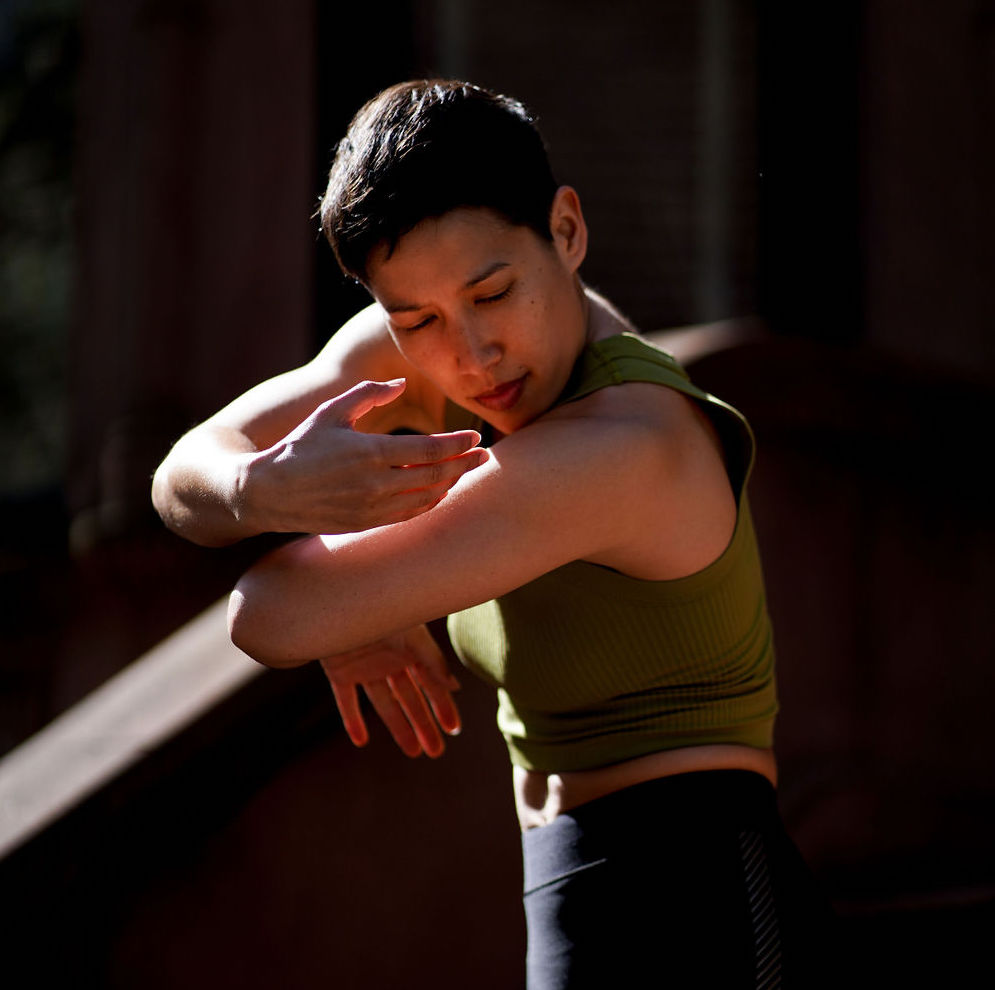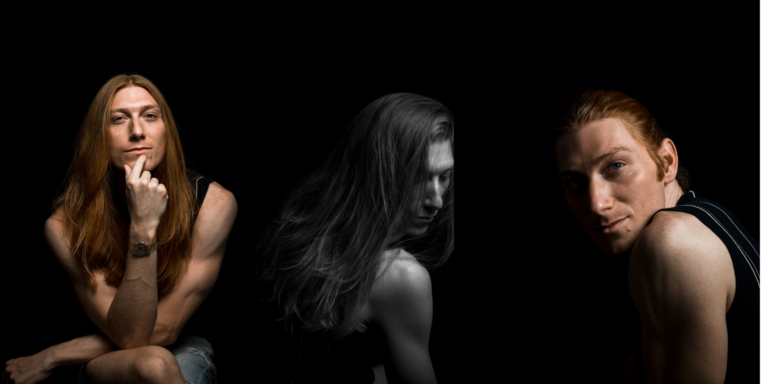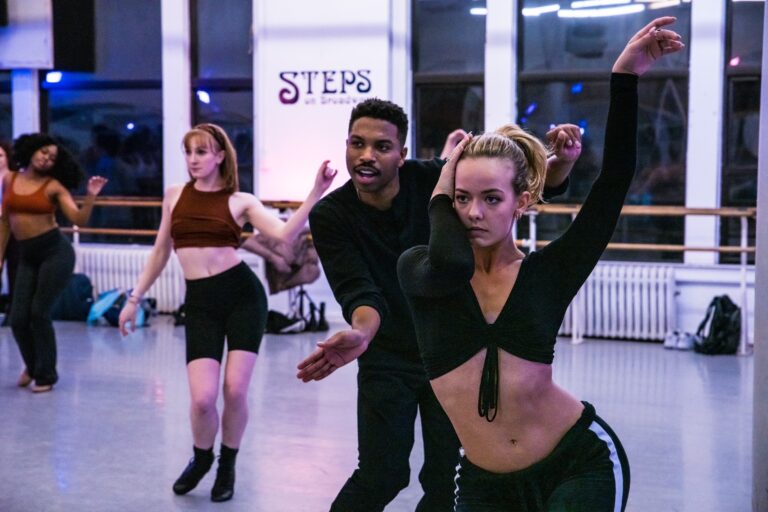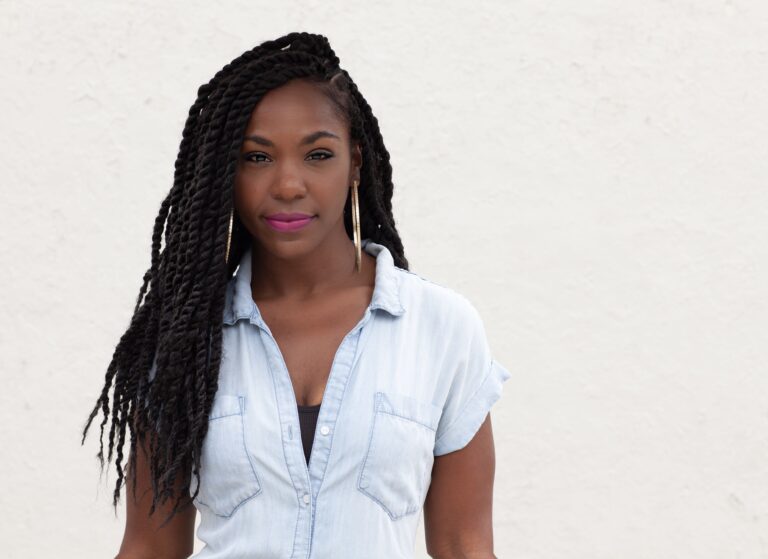
Indah Walsh has a boundlessly eclectic ear for dance. Currently an adjunct at NYU Tisch School of the Arts, she would normally be accompanied live in her contemporary classes if not for pandemic-induced departmental adjustments. A lamentable limitation for many, it has been no obstacle for her.
“My class playlist is seven hours long, and new things keep rolling in,” she says. “It could be Thom Yorke, it could be Bonnie Raitt, it could be Philip Glass. If I hear something that strikes a chord emotionally, I want to express it through movement.”
This also rings true with her work as artistic director of her Indah Walsh Dance Company, though oftentimes the very music that helps her generate material won’t end up in a piece at all. “If a particular image works with multiple pieces of music, then the image itself is sound,” she says. “Otherwise, it’s often the music itself that’s working and not necessarily the choreography.”
Amid her far-reaching musical palate, Walsh’s aural priority for dancing is always consistent: “Anything with rhythmic interest or clarity,” she says. “I love when there are shifts; meter changes or something really rhythmic with something else happening on top. It gives me so much to play with in physicalizing those qualities.”
Lately, she’s been taking requests directly from her students. “If we’re doing something that’s super-repetitive—a skill we’re trying to develop—we need something that’s going to feel good,” she says. “That’s when I ask them ‘What should we do this to?,’ and that’s when Mariah Carey or Cardi B comes in. The other day we were working with some very rhythmically plain material targeting core engagement, and a student suggested we do it to ‘Purple Hat,’ by Sofi Tukker. It immediately made what was an exercise feel more like dancing, which is the hope for all of my class material.”
With her Tisch Open Arts classes for nonmajors, Walsh creates shared playlists for her students to populate with selections that inspire them. Partly a way to get wheels turning towards final composition projects, it serves a dual purpose: “It’s a fun way to build community that lets the students feel like they have a voice,” she says.
Walsh’s breadth of taste is supported by an international upbringing. She began dancing at age 4 in rural Pennsylvania. In fifth grade, the family moved to Indonesia, where she attended Jakarta International (now Intercultural) School. She returned to Pennsylvania for the rest of middle school before spending her high school years in Taiwan at Taipei American School, where she received a dance education most don’t get until college—one that integrated dance forms from around the world, hosted copious performances, and taught young choreographers to begin with a theme from which to generate movement before finding music that is thematically supportive.
As a teacher, Walsh has reshuffled her workflow to meet her students’ needs. “Whether or not I have an accompanist, I always choreograph my class material to music, so what’s happening in the music absolutely informs what’s happening physically,” she says. Before finding music, however, is setting a pedagogical intention. Identifying a skill to hone prompts a search for musical qualities that support the skill. Footwork tends to want sharp, isolated rhythms, for example, while leg and hip strengthening call for the spaciousness of something slow and fluid. Should she have a musician, the task becomes communicating the source music’s meter and qualities to the player.
The sum of these intentions generates classes with full and varied energetic arcs. Beginning on the floor, her warm-up consists of an accumulating sequence with open timing, done to soft, introspective sound. Once up, combinations toggle metrically between 3s and 4s, with less usual time signatures like 5s and 7s peppered in to keep things fresh. “If the last phrase is in 8s, I’ll take a chunk and do it in a 5,” she says. “If they really know a phrase, we do it faster.”
Throughout the pandemic, Walsh has taken advantage of Zoom to hold periodic improv jams. “With improvisation, people are listening differently. It’s about the arc of the song itself, the journey it takes you on,” she says. Always centered on a theme, Walsh matches improvisation prompts—like “ugly dancing” or “falling out of place, melting into space”—with song selections that can range from the feel-good sounds of The Bee Gees or Prince to the heavier tones of Laurie Anderson to Philip Glass. “If I’m in a certain place, I try to trust that I’m probably not alone in whatever I’m sitting with,” she says, on curating her playlists. “What I need, we might all need.”
Whether via technique or improvisation, the ultimate goal is the same: “I’m trying to get people to a place where they can feel free within any structure—freely and fully themselves.” For Walsh, the “getting there” is predicated on finding our own connections to what we hear and allowing that connection to directly inform how we move, because, as she puts it, “musicality is everything.”
Walsh made Dance Teacher a playlist of her go-to songs, and elaborated on some of her favorite class selections:
“Walk It Talk It,” by Migos, featuring Drake, for a footwork/floorwork exercise
“With footwork I’m naturally drawn to something more rhythmic, but this combination also connects to sounds that are more swoopy and flowy. With this, there’s a pokiness to his voice, but the beat has space in it. It helps the dancers get integrated and arrive in certain places. Sometimes they have lots of time to get there, and other times they have to really get there. Once we get to the floor it’s about the keyboard and the meatiness of the bass. There are so many layers of quality within this one song, which all the while manages to remind you not to take yourself so seriously.”
“Ladies,” by Fiona Apple, for a center exercise
“I am always drawn to threes. If a song is in a three, something in me perks up. The space in it feels so juicy for movement. This is for a combination dealing with core-distal sensibility and turning with different levels of momentum. In the beginning, one turn leads to the next; by the end we’re turning in a shape just by pushing off the ground. There’s something about the spaciousness in this song that if you’re not really using your plié you’re going to think ‘Oh my God, why is this so slow?’ It’s about filling the time to fulfill the movement.”
“Mad,” by Solange, featuring Lil Wayne, for a culminating phrase
“The lyrics—the inner conflict between anger and love—inform the quality of the movement. By the time we get to this phrase, the dancers have already practiced each part of it throughout class in different meters and tempos, so by the end they can trust their bodies to know what to do and focus more on expression. It’s like you’re swearing, but you’re swearing to yourself, and you’ve got all this pent-up anger, but you gotta let it go. I’ve found this has enabled dancers to not only continue to work on technique, but to explore their artistry, as well.”
“Paténipat,” by Charlotte Adigéry, for improvisation
“Just listen to it. There’s something very sensual. It’s kinda witchy. It’s sneaky. I feel like she’s casting a spell. The repetition of her vocals, in a language I don’t understand…”




